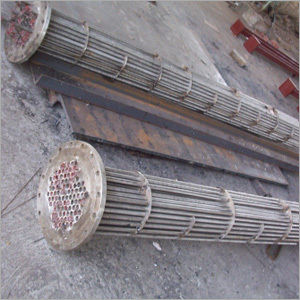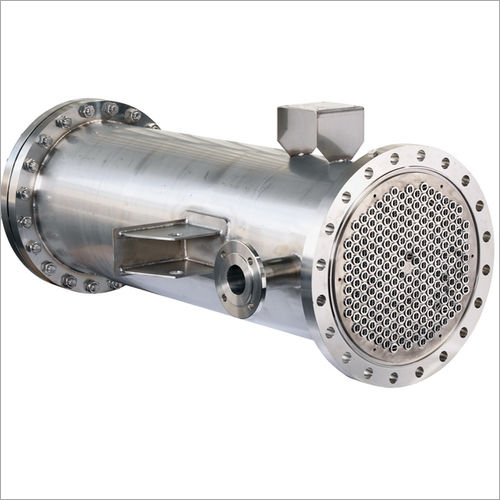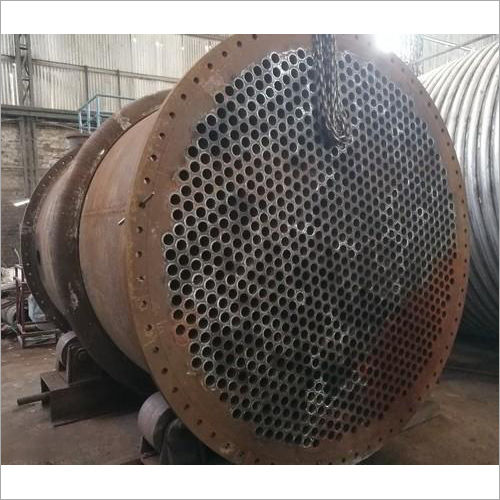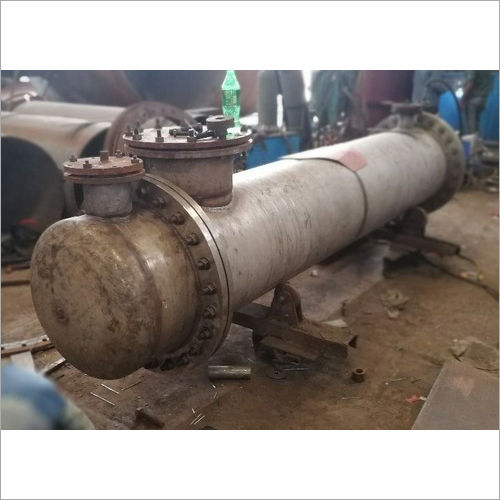Call: 08045475205

Industrial Heat Exchangers
46000 INR/Unit
Product Details:
- Air Volume 6000 m/h
- Thickness 4 mm
- Max. Capacity 50000 kcal/h
- Max Pressure 16 bar
- Diameter 750 mm
- Number of Pipe 78
- Temperature Max 150
- Click to View more
X
Industrial Heat Exchangers Price And Quantity
- 46000 INR/Unit
- 1 Unit
Industrial Heat Exchangers Product Specifications
- 380 V
- New
- 1800 mm x 650 mm x 1400 mm
- 10 bar
- 1100 kg
- Max 150
- 78
- 750 mm
- 2.5 kW
- 24 m/h
- Tubular
- 16 bar
- 50000 kcal/h
- 4 mm
- 6000 m/h
Industrial Heat Exchangers Trade Information
- All India
Product Description
Industrial Heat Exchangers
Heat Exchanger are devices to enhance or facilitate the flow of heat. Heat Exchanger used to transfer heat between two or more streams of fluid. Tubular heat exchanger are found in the great majority of applications, primarily for historical and economic reason. They have been in use for a long time and are familiar to many engineers. Standard models are available in a wide range of capacities at reasonable cost, as are the custom made units found in oil refineries and chemical process plants and in the power industries.
The best know standards for tubular heat exchanger are the Tema standards of the Tubular Exchanger Manufactures Association, which include a basic nomenclature and classification scheme for tube and shell heat exchanger.
Heat Exchanger are devices to enhance or facilitate the flow of heat. Heat Exchanger used to transfer heat between two or more streams of fluid. Tubular heat exchanger are found in the great majority of applications, primarily for historical and economic reason. They have been in use for a long time and are familiar to many engineers. Standard models are available in a wide range of capacities at reasonable cost, as are the custom made units found in oil refineries and chemical process plants and in the power industries.
The best know standards for tubular heat exchanger are the Tema standards of the Tubular Exchanger Manufactures Association, which include a basic nomenclature and classification scheme for tube and shell heat exchanger.
Superior Tubular Structure
The tubular design enhances heat transfer efficiency while providing structural integrity required for intensive industrial operations. With 78 pipes and a 750 mm diameter, this configuration supports effective energy exchange even under challenging pressures up to 16 bar and temperatures up to 150C, making it ideal for various sectors.
Versatile Application and Installation
Engineered with dimensions of 1800 mm x 650 mm x 1400 mm, this heat exchanger is designed for straightforward integration into new or existing industrial systems. Its suitability for high-volume air and liquid flows makes it a practical solution for manufacturing, chemical processing, and energy management industries.
FAQs of Industrial Heat Exchangers:
Q: How does the tubular structure of the heat exchanger enhance its performance?
A: The tubular structure provides a large surface area for heat transfer, allowing efficient exchange between fluids. With 78 pipes inside the unit, it distributes heat evenly and effectively, thereby boosting overall performance and longevity under high-pressure and high-temperature conditions.Q: What are the primary applications of this industrial heat exchanger?
A: This equipment is designed for use in manufacturing plants, chemical processing, HVAC systems, and other industries where controlled heat exchange is essential. Its robust construction and high efficiency make it suitable for both new installations and system upgrades.Q: When is it ideal to use this heat exchanger in an industrial process?
A: It is best used when your process requires reliable thermal management under high flow rates (24 m/h) and pressures up to 16 bar, especially if working temperatures reach up to 150C. Its capacity and specifications support continuous, demanding operational cycles.Q: Where can this heat exchanger be installed for optimal results?
A: Optimal installation locations include central process lines in manufacturing facilities, chemical reactors, or facilities handling substantial air or liquid movement. Its compact size and horizontal orientation allow easy integration into existing plant layouts.Q: What is the process for operating and maintaining this heat exchanger?
A: After installation, regular visual inspections, pressure checks, and cleaning (especially of the 78 tubes) protect against buildup and ensure efficient operation. Scheduled maintenance following manufacturer guidelines will preserve performance and prevent unnecessary downtime.Q: How is the maximum liquid flow rate and temperature achieved safely?
A: By following specified parametersmaximum 24 m/h liquid flow and temperatures up to 150Cthe units design ensures efficient, safe operation. Safety mechanisms and sturdy 4 mm walls safeguard against leaks, while pressure-rated construction allows it to handle up to 16 bar confidently.Q: What are the main benefits of choosing this heat exchanger from a distributor in India?
A: Purchasing from an Indian distributor, exporter, or manufacturer ensures competitive pricing, access to a wide support network, and reliable after-sales service. Additionally, strict manufacturing standards in India assure robust quality and long-term dependability.Tell us about your requirement

Price:
Quantity
Select Unit
- 50
- 100
- 200
- 250
- 500
- 1000+
Additional detail
Mobile number
Email

 Send Inquiry
Send Inquiry




